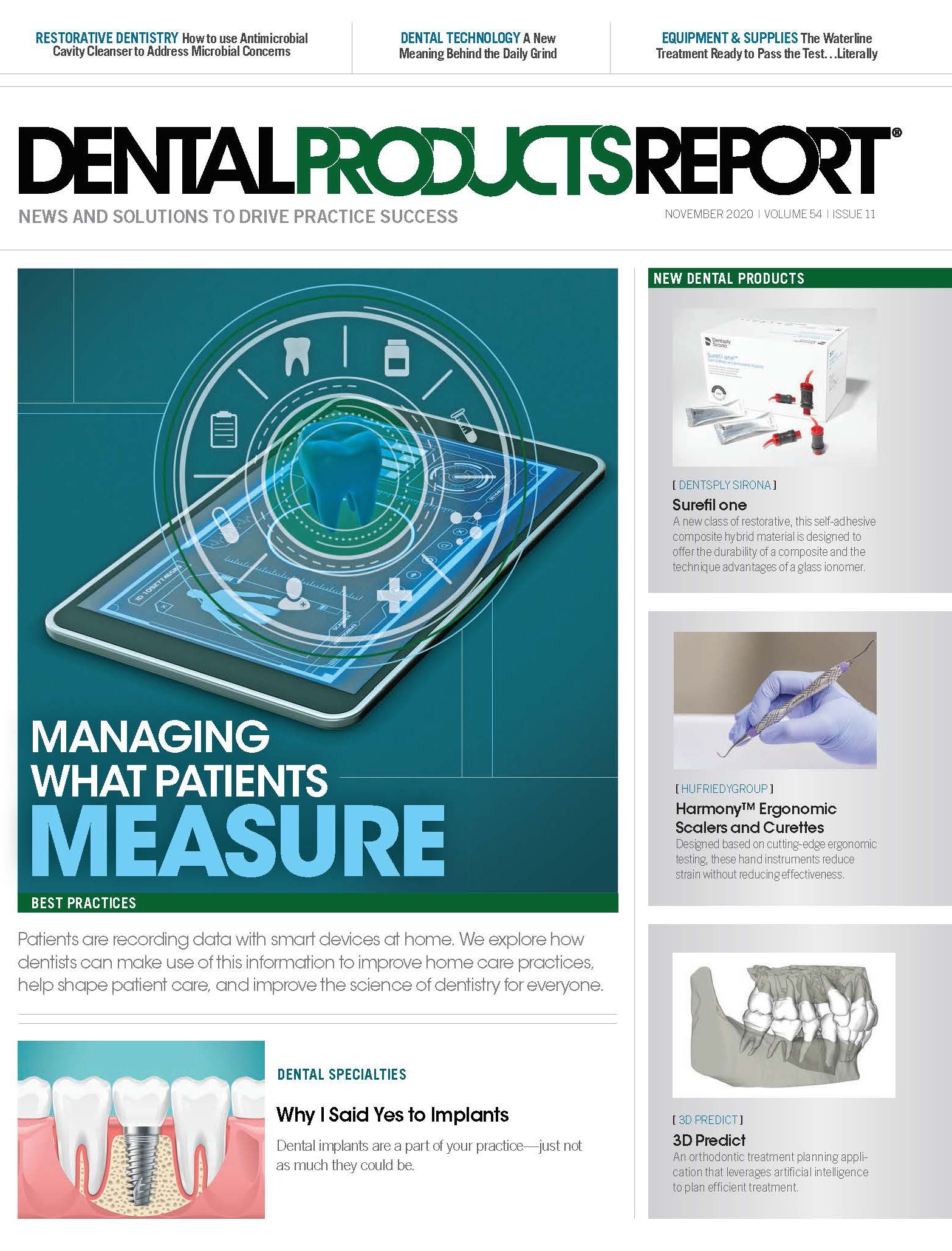A New Meaning Behind the Daily Grind
Solutions for today’s dentists facing more stress-induced bruxism than ever before.

Of all the ways that coronavirus disease 2019 (COVID-19) has rewritten expectations for 2020, new safety protocols tend to grab the most headlines. However, there is a story that doesn’t grab the “front page” as often but is quietly making its way into not only dental journals but mainstream national media:1,2 Tooth grinding.
Between COVID-19, the economy, and the election, people are carrying immense stress and anxiety. In her piece for The New York Times, Tammy Chen, DDS, suggests that this stress leads to clenching and grinding, which can damage teeth.2 She also points out how working from home—at a couch or stool instead of a desk—can lead to awkward body positions and ergonomics that also contribute to grinding problems at night. According to Dr Chen, the insomnia many people report at this time is also an issue, as stress can lead to a “battle-ready state of arousal, instead of resting and recharging. All that tension goes straight to the teeth.” For these reasons, Dr Chen reports having seen more tooth fractures in the last 6 weeks than in the previous 6 years.
In a September interview with CTV News, Kal Khaled, DDS, president of the Ontario Alliance of Dentists, summarized the issue, stating, “[Tooth] decay is accelerated by stress, and poor life conditions, such as not sleeping or eating well. Needless to say, teeth have taken a beating over the last few months.”3
A High-Tech Solution
We are fortunate to live in a time where technology is available to help manage this problem in a way that builds trust and confidence with our patients.
Bravrr BruxRelief, a 2020 Cellerant Best of Class Technology Award winner, is a wearable diagnostic system that features patented sensors for monitoring temporalis muscle activity from clenching and grinding behaviors associated with bruxism. It provides a simple way for clinicians to diagnose and document a patient’s bruxing activities, tracking patient muscle activity during sleep.
Typically, a patient will wear the BruxRelief headband and sensors for a 3-night assessment done in their own home. Data from the sensors is sent to a connected smartphone app that posts the information to a secure cloud where it can be accessed almost instantly from anywhere by the patient and the clinician.
The data captured by the system provides a picture of the frequency and duration of temporalis muscle contractions while the patient sleeps. After the assessment, the data can be used to convince the patient of the need for a nightguard or other treatment approach. The company eventually plans to add biofeedback capabilities to help provide cognitive-behavioral training and muscle reeducation to reduce or eliminate pain from involuntary clenching and grinding of teeth.
Your solutions to bruxism or cracked teeth may vary, but BruxRelief puts you in a position to be a problem solver in an uncertain time and offer some relief in the midst of sleepless nights. In my book, that is technology at its best—bringing innovation to bear in a way that informs clinical solutions and also creates a deeper relationship and sense of trust between clinicians and their patients.
I encourage you to go to bruxrelief.com and do some research into the product, but the takeaway here is that a data-driven, artificial intelligence-powered device is now available for at-home assessment. In a world full of stress, here’s a solution that can make your patients’ lives a little easier.
References
1. Gividen SL. TMJ, stress, and the patient psyche: the effects of COVID-19. DentistryIQ. August 12, 2020. Accessed October 16, 2020. https://www.dentistryiq.com/dentistry/occlusion-tmj-and-sleep-medicine/video/14181552/tmj-stress-and-the-patient-psyche-the-effects-of-covid19-video
2. Chen T. A dentist sees more cracked teeth. What’s going on? The New York Times. September 8, 2020. Accessed October 16, 2020. https://www.nytimes.com/2020/09/08/well/live/dentists-tooth-teeth-cracks-fractures-coronavirus-stress-grinding.html
3. Bogart N. ‘Teeth are taking a beating’: dentists say cracked teeth are more common post-lockdown. CTV News. September 8, 2020. Accessed October 16, 2020. https://www.ctvnews.ca/health/coronavirus/teeth-are-taking-a-beating-dentists-say-cracked-teeth-are-more-common-post-lockdown-1.5096518
